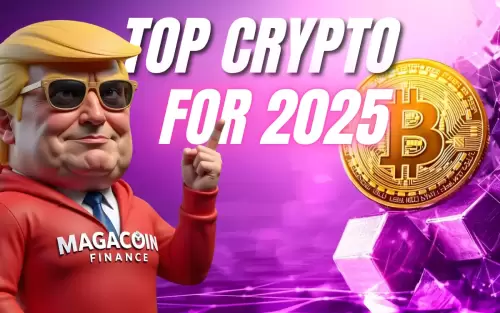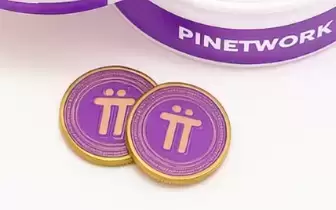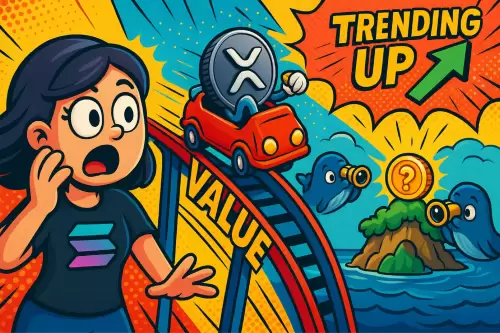 |
|
 |
|
 |
|
 |
|
 |
|
 |
|
 |
|
 |
|
 |
|
 |
|
 |
|
 |
|
 |
|
 |
|
 |
|
Cryptocurrency News Articles
How to Create Your Own Cryptocurrency (It's Easier Than You Think)
Jun 12, 2025 at 12:53 am
Let's be honest, if you've been in the crypto space for more than a week

Let’s be honest, if you’ve been in the crypto space for more than a week, the thought has probably crossed your mind. You see a new namecoin skyrocket, you read a whitepaper for a fascinating new project, and you think, “Could I do that? Could I make my own crypto?”
It sounds like an ridiculously complex, almost mythical undertaking, reserved for coding wizards and Silicon Valley prodigies. For years, it was. Launching a new cryptocurrency meant building an entire blockchain from scratch, a task requiring immense technical skill, time, and resources.
But here’s the thing: the game has completely changed. Today, the answer to the question, “Can I create my own crypto?” is a resounding yes. Not only is it possible, but the technical part of it is surprisingly straightforward—often easier than building a basic website.
Before you quit your day job and start shopping for Lambos, let’s get real. While the creation is accessible, the success is a whole different beast. So, grab your drink of choice, and let’s walk through how you can actually mint your own digital currency and, more importantly, what it takes to give it a fighting chance in the wild world of crypto.
First Things First: Coin vs. Token (This is Important!)
The first and most crucial thing to understand is the difference between a “coin” and a “token.” People use these terms interchangeably, but they are fundamentally different.
A coin (like Bitcoin or Litecoin) is the native cryptocurrency of a specific blockchain. It's used to pay for gas (transaction fees) and secure the chain through mining. To create a coin, you'd need to code an entirely new blockchain, like Satoshi Nakamoto did with Bitcoin in 2008. That's a herculean task, best left to experienced programmers and requiring an astronomical amount of computing power.
A token, on the other hand, is a cryptocurrency built on top of an existing blockchain. For example, most tokens today are ERC-20 tokens, running on the Ethereum network. These tokens inherit the security and speed of the parent chain, allowing developers to focus on the application logic.
For 99.9% of aspiring crypto creators, launching a token is the path. You leverage the security, speed, and reliability of a proven network, allowing you to focus on your project’s actual purpose.
Your Step-by-Step Guide to Making a Crypto Token
We’re going to focus on creating a standard token (like an ERC-20 token on Ethereum or a BEP-20 token on Binance Smart Chain). The process is surprisingly similar across these platforms.
Step 1: Define Your “Why”
Before you write a single line of code, you need a reason for your token to exist. What does it do? Is it designed for a specific use case, like gaming or content creation? Does it serve a charitable purpose? Or is it a memecoin, aiming to entertain and build a community?
Have a clear answer to this. This “why” will form the foundation of your whitepaper and your entire project.
Step 2: Choose Your Blockchain
Where will your token live? The most popular choices are:
* Ethereum: The "DeFi chain," known for its mature ecosystem and sophisticated tooling. However, it can have high gas fees, especially during busy periods.
* Binance Smart Chain (BSC): A rapidly growing chain offering low fees and fast transaction speeds, making it ideal for projects focused on user acquisition.
* Polygon: A chain focused on scalability and sustainability, with low gas fees and a carbon-neutral footprint. It's a good fit for projects aiming for a large user base.
For a beginner, BSC or Polygon are often the most approachable due to their low fees.
Step 3: The “Coding” Part (Don’t Panic!)
This is the part that scares most people off, but it doesn’t have to. A crypto token is governed by a smart contract—a piece of code that defines its rules (its name, symbol, total supply, how it can be transferred, etc.).
You don’t need to be a coding genius to do this. There are incredible open-source templates available from organizations like OpenZeppelin. Better yet, there are now no-code platforms (like Coindies or TokenMint) that can generate a secure smart contract for you by having you fill out a simple form with details like:
* Token name and symbol (e.g., "MyToken," "MTOK")
* Total supply (e.g., 1 billion)
* Decimals (e.g., 6 for units smaller than 1)
* Initial holder (your own wallet address)
Once you have your smart contract code, you’ll use a simple wallet like MetaMask and a tool like Remix to deploy it onto your chosen blockchain
Disclaimer:info@kdj.com
The information provided is not trading advice. kdj.com does not assume any responsibility for any investments made based on the information provided in this article. Cryptocurrencies are highly volatile and it is highly recommended that you invest with caution after thorough research!
If you believe that the content used on this website infringes your copyright, please contact us immediately (info@kdj.com) and we will delete it promptly.






























































